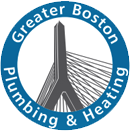In this housing market, many people are building new homes rather than buying. In most cases, they rather build the home they want and need rather than inherit old problems. Breaking ground on a new home can be an exciting time. But did you know that you don’t necessarily need to use your contractor’s plumber? You can hire a plumber for new construction on your own when you are building a home. In fact, hiring a plumber on your own may save you money and time. By hiring your own plumber you can ensure that you have a reputable, reliable licensed and insured plumber who is interested in your needs and requirements.
Initially, you will meet with your plumber with your home plans to determine the layout of your home and where you want everything to go. The plumber will layout the plumbing pipes, the fixtures, which rooms will have water and why, and they will be sure that all the plumbing will be coded for those rooms. Having a great plumber is very important because all plumbing will have to pass inspection before you can move in.
You need a plumber to handle the water supply lines that go into your new home. Sewer and water ‘tie-ins’ are taken care of during the site work. After the foundation is built, the water and sewage and gas lines are brought into your home from the street.
The plumber will also help you with specifications for which plumbing materials are needed for new construction and they will help guide you in the most efficient and longest lasting appliances. Of course, once the home is built, toilets, sinks, water heaters and gas lines also need to be placed and tied into the sewer and water lines. Having a plumber you can trust ensures that your new home does not encounter plumbing problems after you move in.
If you are building a new home, and you would like to hire your own plumber, contact Greater Boston Plumbing and Heating.
Hire a Plumber for New Home Construction – Boston, Worcester
25 Sep 2013



